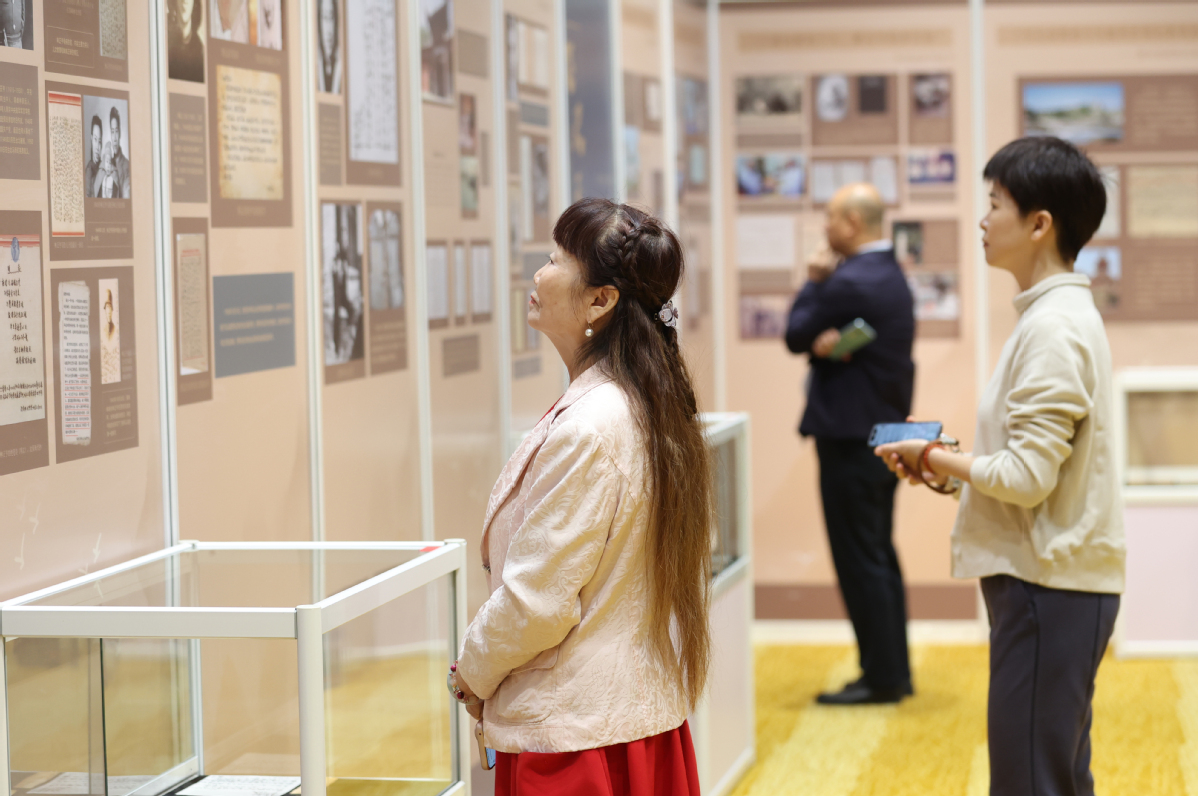Letters exchanged across Taiwan Strait shed light on family ties and memories


Letters exchanged across the Taiwan Strait have long connected families, preserving ties and memories between people on both sides. Many of these stories were shared as the voices behind the letters came to light.
On Tuesday, an exhibition showcasing family letters exchanged across the Strait opened at the Taiwan Guild Hall in Beijing. At the same event, a book compiling the stories behind these letters was also released.
"Cross-Strait family letters embody shared historical memories and Chinese culture, proving that people on both sides are bound by blood and deep emotional ties," Zheng Ping, vice-president of the All-China Federation of Taiwan Compatriots, said.
"With family members divided between the mainland and Taiwan, they lost contact for nearly 30 years," Xu Bo, 70, whose father is in Taiwan, recalled.
Although their hometown address was engraved in their hearts, restrictions on communication made letter writing impossible before.
"Finally, in 1987, Taiwan allowed visits to relatives on the mainland, and later permitted indirect communication," Xu said. "After being away for 40 years, my father sent his first letter home. It took two weeks to reach my grandmother in Taiwan."
The newly released book, Letters Across the Strait, was compiled by the China Museum for Fujian-Taiwan Kinship. It contains 22 stories spanning from the 17th to the 21st century, covering periods from Japanese colonization to Taiwan's recovery, with letters from different eras carrying unique historical significance.
Fan Chih-min from Taipei, Taiwan, shared the story of his mother writing letters to her brother on the mainland.
"My mother was separated from her three-year-old brother at the age of nine. They lost contact for 40 years and finally reconnected through letters in 1988," Fan said.
Between 1988 and 2001, Fan's mother sent one telegram and 14 letters to her brother in Fujian province. These letters were carefully preserved by her brother and later donated to the museum in 2020. "I even brought my son to the museum to see those letters," Fan said.
Since 2019, the China Museum for Fujian-Taiwan Kinship has carried out a preservation project to collect and study these cross-Strait letters. The museum now houses more than 4,000 letters, covering 28 provincial-level regions, including Taiwan, Hong Kong, Macao, Fujian, and Guangdong, spanning the years from 1913 to 2023.
"Letters across the Strait are historical witnesses to the long-standing exchanges between people on both sides," Zhang Ding, deputy director of the museum of family letters at Renmin University of China, said. "They reflect our shared cultural roots, national spirit, and traditional virtues."
Zheng warned that a small minority of "Taiwan independence" forces is going against the tide of history and openly defying the shared will of compatriots across the Strait.
"They incite confrontation, obstruct exchange and cooperation, and even collude with external forces to provoke separatist activities under the banner of 'independence'," he said.
"This scourge must be clearly recognized and resolutely eliminated by compatriots on both sides of the Strait."
- Letters exchanged across Taiwan Strait shed light on family ties and memories
- Xi urges concerted efforts to better build beautiful Xinjiang
- Xi arrives in Urumqi for celebrations of 70th founding anniversary of Xinjiang Uygur autonomous region
- World's first China-Europe Arctic Express launches
- Euro-Asia Economic Forum opens in Xi'an
- NBA star Draymond Green charms audience in Shenyang





































